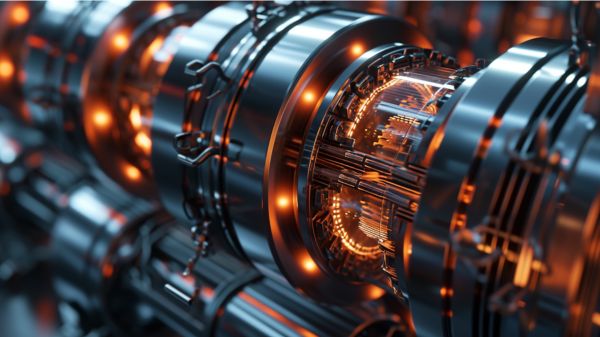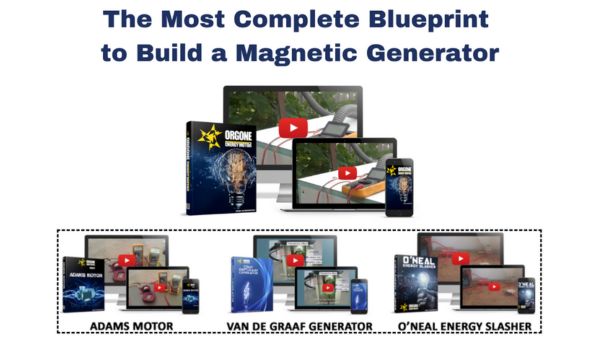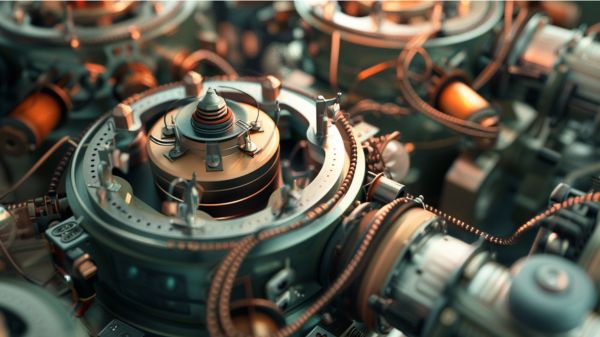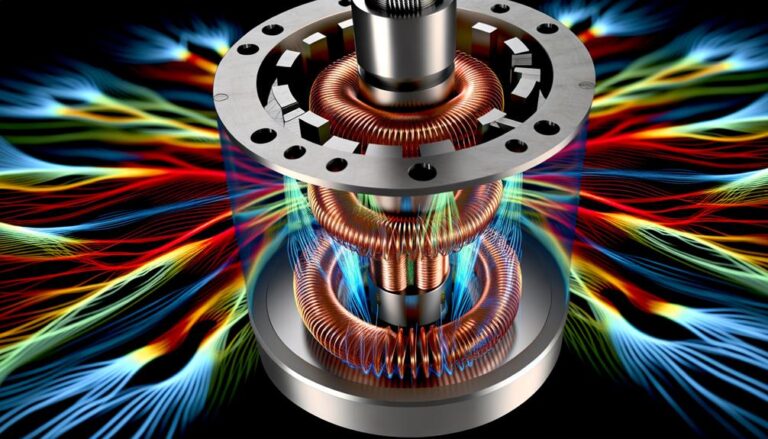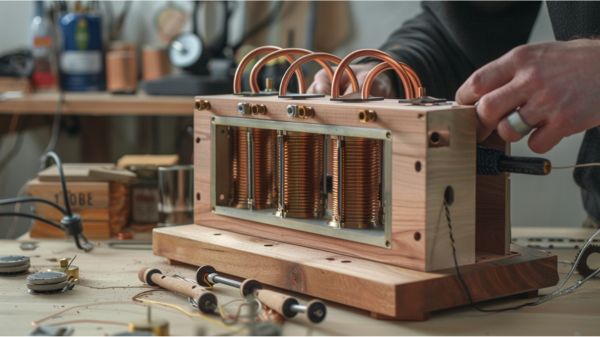14 Tips for Optimizing Permanent Magnet Generators
They say ‘a stitch in time saves nine,’ and when it comes to optimizing permanent magnet generators, this adage holds true. If you’re looking to maximize the efficiency, reliability, and performance of your wind turbines, then you’ve come to the right place.
In this discussion, we’ll explore 14 tips that will help you get the most out of your permanent magnet generators. From selecting the right magnets and optimizing stator winding design to ensuring proper maintenance and monitoring, these tips will leave you with a tantalizing promise of unlocking the full potential of your generators.
So, let’s embark on this journey together and discover the secrets to optimizing permanent magnet generators.
Key Takeaways
- Magnet selection and optimization are crucial for generator performance and efficiency.
- Proper magnet orientation and alignment help improve magnetic flux distribution and minimize losses.
- Stator winding design should be optimized for specific generator requirements to maximize power output.
- Efficient cooling systems and minimizing losses contribute to overall generator efficiency and longevity.
Efficient Magnet Selection
Efficient magnet selection is crucial for optimizing the performance and overall efficiency of permanent magnet generators. When designing a Permanent Magnet Synchronous Generator (PMSG), careful consideration of magnet properties and geometry is essential.
The choice of magnet material, with specific characteristics like remanence and coercivity, directly impacts the generator’s performance. Additionally, evaluating the trade-offs between magnet weight and performance is crucial to achieve the desired balance.
To ensure efficient magnet selection, advanced methods like magnetic modeling, equivalent circuit analysis, and finite element analysis can be employed. These techniques aid in understanding the magnetic field distribution, optimizing generator design, and predicting the overall system efficiency and annual energy production.
Proper Magnet Orientation
To ensure optimal performance and power output of permanent magnet generators, careful attention must be given to the proper orientation of the magnets in the rotor. The correct alignment of the magnets is crucial for achieving maximum efficiency and minimizing losses.
Here are three key reasons why proper magnet orientation is essential for optimizing permanent magnet generators:
- Improved magnetic flux: Proper magnet orientation ensures a uniform and consistent distribution of the magnetic field in the generator. This leads to improved magnetic flux, resulting in enhanced generator performance and power output.
- Minimized cogging torque: Incorrect magnet orientation can increase cogging torque, which is the resistance experienced by the rotor when attempting to rotate. By aligning the magnets correctly, cogging torque can be minimized, allowing for smoother and more efficient operation.
- Enhanced efficiency: With the use of Finite Element Method (FEM) analysis and optimization techniques, the magnet orientation can be fine-tuned to maximize the generator’s efficiency. This optimization process considers factors such as wind power and load characteristics to ensure the generator operates at its highest efficiency point.
Optimal Stator Winding Design
For optimal performance and power output of permanent magnet generators, careful consideration must be given to the design of the stator winding. The stator winding design plays a crucial role in the efficiency and overall performance of the generator. To achieve the best results, the stator winding should be optimized for the specific application, whether it is a wind generator, a low-speed or high-power generator.
One important aspect of stator winding design is the arrangement of the winding coils. This can be achieved through different methods, such as concentric winding or lap winding. Each method has its advantages and disadvantages, and the choice depends on the specific requirements of the generator.
Another key factor to consider is the placement of the permanent magnets on the stator surface. The magnets should be positioned in such a way that they create a strong magnetic field and maximize the power output. This can be achieved by carefully analyzing the magnetic field distribution and optimizing the magnet placement accordingly.
In summary, optimizing the stator winding design is crucial for achieving optimal performance and power output in permanent magnet generators. By carefully considering factors such as winding arrangement and magnet placement, the efficiency and overall performance of the generator can be significantly improved.
| Factor | Considerations |
|---|---|
| Winding Arrangement | – Concentric Winding: Suitable for low-speed generators. |
| – Lap Winding: Suitable for high-power generators. | |
| Magnet Placement | – Analyze magnetic field distribution. |
| – Optimize magnet placement for maximum power output. | |
| Stator Design | – Consider specific requirements of the generator. |
| – Optimize for wind generators, low-speed or high-power generators. |
Effective Cooling System
As we move on to discussing the subtopic of effective cooling systems, it’s crucial to ensure that permanent magnet generators are equipped with an efficient method to dissipate heat and maintain optimal performance. Here are three key factors to consider when designing and optimizing the cooling system for a Permanent-Magnet Synchronous Generator:
- Core Losses: Efficient cooling helps to minimize core losses, which occur due to the eddy currents and hysteresis in the generator’s magnetic core. By removing excess heat, the cooling system reduces these losses and improves overall efficiency.
- Flux Density: The cooling system should be designed to maintain the flux density within an acceptable range. Excessive heat can cause the magnets to demagnetize or weaken, leading to a decrease in generator output. Proper cooling helps to keep the flux density stable and ensures consistent performance.
- Efficiency: An effective cooling system contributes to the overall efficiency of the permanent magnet generator. By keeping the temperature within optimal limits, the cooling system helps to reduce energy losses and increase the generator’s overall efficiency.
Having an efficient cooling system in place is crucial for the longevity and performance of permanent magnet wind generator systems. By dissipating heat effectively, the cooling system prevents damage to the generator components and ensures consistent operation over time.
Minimizing Magnetic Losses
Minimizing magnetic losses is a critical aspect of optimizing permanent magnet generators for maximum efficiency and performance. Permanent magnet synchronous generators (PMSGs) are widely used in direct-drive wind turbines due to their high power density and reliability. To achieve optimal performance, it’s essential to minimize magnetic losses in these generators.
One effective method is the use of the finite element method (FEM) for accurate analysis and prediction of magnetic losses. FEM allows for precise modeling and simulation of the magnetic field distribution and flux density within the generator. By understanding the distribution of magnetic losses, designers can identify areas of improvement and optimize the generator’s design accordingly.
Furthermore, careful selection of materials with low magnetic losses can significantly enhance the efficiency of PMSGs. High-quality electrical steels, for instance, can reduce eddy current losses and hysteresis losses, leading to improved performance.
Reducing Mechanical Losses
To reduce mechanical losses in permanent magnet generators, efficient bearing systems can be implemented to minimize friction. Here are three tips to help you optimize your generator and reduce mechanical losses:
- Use high-quality lubricants: Proper lubrication is crucial for reducing friction in bearing systems. By using high-quality lubricants and following the manufacturer’s recommendations, you can minimize mechanical losses and ensure the smooth operation of your generator.
- Perform regular maintenance: Regular maintenance is essential to keep your bearing systems in optimal condition. This includes cleaning, inspection, and lubrication. By staying proactive and addressing any issues promptly, you can prevent mechanical losses due to bearing friction.
- Optimize the rotor design: Employing aerodynamic designs and balanced rotor systems can help minimize turbulence and vibration-induced mechanical losses. By optimizing the generator’s structural integrity and material selection, you can reduce mechanical losses and improve the overall efficiency of your high-power, low-speed wind generator.
Enhancing Rotor Design
Enhancing the rotor design is crucial for optimizing the performance and efficiency of permanent magnet generators. When it comes to high-power, low-speed applications such as wind generators, the rotor design plays a significant role in maximizing power output and minimizing losses. Here are some tips to enhance the rotor design and achieve better performance:
| Tips for Enhancing Rotor Design |
|---|
| 1. Use high-quality permanent magnets for improved magnetic field strength. |
| 2. Optimize the shape and size of the rotor to reduce drag and increase efficiency. |
| 3. Employ advanced materials with low electrical resistance to minimize power losses. |
| 4. Implement proper cooling mechanisms to prevent overheating and ensure long-term operation. |
Optimizing Air Gap Distance
Optimizing the air gap distance is a critical factor in maximizing the efficiency and power output of permanent magnet generators. To ensure the best performance, consider the following:
- Magnetic Flux Density: The air gap distance significantly influences the magnetic flux density in the generator. By adjusting the air gap distance, you can optimize the magnetic field strength, leading to improved power generation capabilities.
- Cogging Torque: The air gap distance also affects the cogging torque, which is the torque required to start the generator. Finding the right balance is crucial as too large of an air gap can increase cogging torque, negatively impacting overall efficiency.
- Computational Simulations: To determine the optimal air gap distance for your specific generator design, employ computational simulations and finite element analysis. These tools can provide valuable insights and help you achieve the perfect balance between maximizing magnetic flux and minimizing undesirable effects.
Balancing Generator Load
Achieving a balanced load is essential for efficient operation and longevity of the generator, ensuring optimal performance and minimizing maintenance costs.
Load balancing is the process of evenly distributing the electrical load across the generator’s components. This is particularly important in high-power, low-speed permanent magnet generators where the load can vary significantly.
An unbalanced load can lead to uneven wear and tear on the generator’s components, causing inefficiencies and potentially damaging the system.
To optimize load balancing, it’s crucial to regularly monitor and adjust the load distribution. This can be done by employing load banks or using intelligent load management systems that distribute the load evenly.
Implementing Advanced Control Algorithms
To further enhance the efficiency and performance of permanent magnet generators in wind turbines, the implementation of advanced control algorithms is crucial. These algorithms offer a range of benefits that optimize the operation of the generator and maximize energy production.
Here are three key advantages of utilizing advanced control algorithms:
- Enhanced power extraction efficiency: Advanced control algorithms allow for precise control of the generator’s output, ensuring that the maximum amount of power is extracted from the wind. This optimization reduces energy losses and improves overall system efficiency.
- Improved system stability: By continuously monitoring and adjusting the generator’s operation in real-time, advanced control algorithms help maintain system stability. This prevents fluctuations and ensures a consistent and reliable power output.
- Dynamic adjustments to varying wind conditions: Wind conditions are ever-changing, and advanced control algorithms enable the generator to adapt to these variations. By dynamically adjusting parameters such as rotor speed and pitch angle, the generator can maximize energy production under different wind speeds and directions.
Implementing advanced control algorithms in permanent magnet generators is a crucial step towards optimizing their performance and achieving higher levels of efficiency.
Ensuring Proper Maintenance and Lubrication
To ensure optimal performance and longevity of your permanent magnet generator, it’s crucial to follow proper maintenance and lubrication practices.
Regularly inspect and clean the generator to prevent dust and debris buildup, which can hinder its efficiency.
Use high-quality lubricants recommended by the manufacturer to ensure smooth operation, and monitor the lubrication system for any leaks or malfunctions.
Lubrication Best Practices
Proper lubrication is essential for ensuring the longevity and efficiency of permanent magnet generators. To optimize the performance of your generator, follow these best practices for lubrication:
- Use high-quality lubricants: Select lubricants specifically designed for the components of your permanent magnet generator. These lubricants provide the necessary protection and reduce friction, enhancing the generator’s efficiency and lifespan.
- Follow maintenance schedules: Establish regular maintenance and lubrication schedules to prevent wear and tear. This proactive approach helps identify and address potential issues before they become major problems.
- Apply the right quantity: Avoid over-lubrication, as excessive lubricant can lead to damage. Follow the manufacturer’s guidelines and apply the correct amount of lubrication to each designated point.
Maintenance Schedule Guidelines
Regular inspections and maintenance are essential for ensuring the proper functioning and longevity of your permanent magnet generator. By following maintenance schedule guidelines, you can optimize the performance of your permanent-magnet synchronous generator (PMSG) and prevent potential issues.
Begin by scheduling regular inspections to identify any problems early on. Lubricate bearings and other moving parts as recommended by the manufacturer to minimize wear and prevent damage. Clean and inspect the air gap to ensure it’s free from debris and that the magnets and coils are in good condition.
Properly monitor and maintain cooling systems to prevent overheating and ensure efficient operation. Keeping records of maintenance activities and observations will help you track the generator’s performance and identify areas for improvement.
Importance of Regular Inspections
By conducting regular inspections and ensuring proper maintenance and lubrication, you can effectively optimize the performance and extend the lifespan of your permanent magnet generator. Regular inspections play a crucial role in the overall optimization of your generator. Here are three reasons why regular inspections are important:
- Prevent unexpected breakdowns: Regular inspections help identify any potential issues with your permanent magnet generator’s components and systems. By addressing these issues early on, you can prevent unexpected breakdowns and avoid costly repairs.
- Maintain efficiency: Lubrication is essential for reducing friction and wear in your generator. Regular inspections ensure that the lubrication is adequate, allowing your generator to operate at its peak efficiency.
- Enhance reliability: Proper maintenance and lubrication, facilitated by regular inspections, contribute to the overall reliability of your generator. By staying on top of maintenance tasks, you can ensure that your generator continues to perform optimally and reliably.
Utilizing High-Quality Materials for Construction
When it comes to constructing permanent magnet generators, the selection of high-quality materials is of utmost importance.
By using advanced magnetic alloys and high-strength structural components, you ensure the durability and efficiency of the generator.
Opting for high-grade permanent magnets and materials with superior magnetic properties further enhances the performance and power density.
Material Selection Importance
Utilizing high-quality materials in the construction of permanent magnet generators is crucial for optimizing their performance and ensuring their durability. The importance of material selection can’t be overstated when it comes to these generators.
To understand why material selection is so important, consider the following:
- Enhanced efficiency: High-quality materials can improve the efficiency of permanent magnet generators, allowing them to convert more mechanical energy into electrical energy. This leads to increased power output and improved overall performance.
- Increased reliability: By using materials with superior strength and durability, permanent magnet generators can withstand harsh operating conditions and have a longer lifespan. This reduces the need for frequent maintenance and repairs, ensuring uninterrupted power generation.
- Optimum weight and efficiency: The properties of the chosen materials, along with the design parameters of the generator, contribute to achieving the desired weight and efficiency. Careful material selection enables the generator to meet the specific requirements of wind turbine designs while maximizing its performance.
Benefits of Quality Materials
High-quality materials play a crucial role in optimizing the performance and durability of permanent magnet generators. Utilizing high-quality materials for construction offers enhanced durability and longevity, ensuring consistent and reliable operation in various environmental conditions. Quality materials contribute to improved efficiency and performance, resulting in high generator efficiency.
By incorporating high-quality materials, such as robust magnets and durable coils, permanent magnet generators can achieve high efficiency levels even at low wind speeds. These quality materials also contribute to the overall robustness and resilience of the generators, reducing maintenance costs and increasing reliability.
When designing for wind, the optimization criterion should include the selection of high-quality materials to achieve the desired performance and efficiency. Therefore, using quality materials in the construction of permanent magnet generators is essential for their optimization and long-term functionality.
Ensuring Durability and Performance
To ensure the durability and performance of the permanent magnet generator, it’s crucial to utilize construction materials of the highest quality. By using high-quality materials, you can optimize the generator’s functionality and maximize its potential.
Here are three important considerations when selecting materials for your permanent magnet generator:
- Mechanical Properties: Choose materials with excellent mechanical properties, such as high tensile strength and fatigue resistance. This will enhance the generator’s longevity, allowing it to withstand the harsh conditions of wind power applications.
- Resistance to Environmental Factors: Opt for materials that are resistant to environmental factors such as moisture, temperature variations, and corrosion. This will protect the generator from damage and ensure its reliable operation over time.
- Magnetic and Electrical Properties: Select materials with high magnetic permeability and low coercivity to maximize the magnetic flux density and minimize losses. Additionally, materials with high electrical conductivity will reduce resistive losses and improve the generator’s overall efficiency.
Minimizing Electrical Resistance
Minimizing electrical resistance is a critical step in optimizing the design of a permanent magnet generator to increase efficiency and reduce power losses. By reducing copper losses, the overall performance of the generator can be significantly improved.
When selecting the dimensions for the generator, it’s important to consider minimizing electrical resistance to achieve higher efficiency. The material properties and geometry of the generator also play a significant role in determining the electrical resistance and should be carefully optimized.
To minimize electrical resistance, specialized methods such as magnetic models, equivalent circuit analysis, and finite analysis methods can be employed. These methods aid in optimizing the design of the permanent magnet generator, ensuring that it operates at its highest efficiency and contributes to the advancement of renewable energy, particularly in wind power applications.
Additionally, minimizing electrical resistance helps reduce cogging torque and enhances the performance of coreless axial flux generators.
Continuous Monitoring and Performance Optimization
Continuous monitoring and performance optimization are crucial for maximizing the efficiency and output of a permanent magnet generator. To achieve optimal design and operation, here are three key points to consider:
Real-Time Performance Evaluation:
Continuous monitoring allows for the evaluation of a permanent magnet generator’s performance in real-time. By monitoring factors such as temperature, vibration, and power output, any deviations from expected efficiency and power can be quickly identified and addressed.
Immediate Issue Detection:
Continuous monitoring enables the detection of any issues that may affect the generator’s efficiency or reliability. By promptly identifying and addressing these issues, potential downtime and maintenance costs can be minimized, ensuring continuous and reliable operation.
Adjustments for Maximum Power:
Continuous monitoring provides the opportunity for adjustments to be made in real-time to maximize the generator’s efficiency and output. By monitoring various parameters, such as wind speed and load demand, adjustments can be made to optimize the generator’s performance and generate maximum power.
Conclusion
Congratulations! With these 14 tips for optimizing permanent magnet generators in wind turbines, you’re now equipped with the knowledge and tools to enhance efficiency, reduce weight and costs, and maximize annual energy production.
By carefully considering multiple criteria and utilizing advanced analysis methods, you can create a masterpiece of engineering that harmonizes with the wind’s energy.
So, go forth and let your turbine soar to new heights, powered by the brilliance of your optimization skills!
